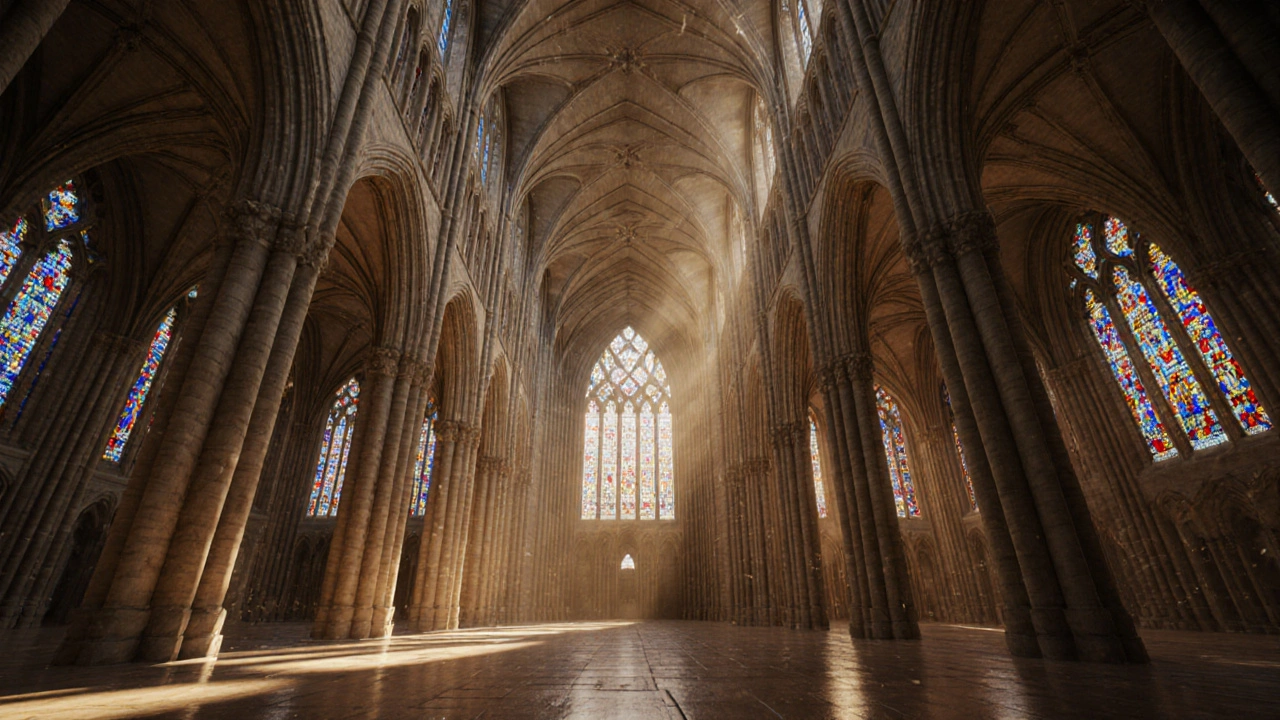Medieval Architecture
Medieval Architecture, building styles from roughly the 5th to 15th centuries, marked by stone walls, arches, and intricate ornamentation. Also known as Middle Ages architecture, it shaped towns, cathedrals, and fortresses across Europe. When you step into a stone‑capped town square, the weight of centuries presses on you, reminding you that every buttress and vaulted ceiling was built to last. This era isn’t just a backdrop for knights; it’s a living catalog of engineering tricks, religious symbolism, and regional identity.
One of the most recognizable offshoots is Gothic Architecture, the late medieval style famous for pointed arches, ribbed vaults, and soaring spires. Gothic structures pushed stone higher than ever before, using flying buttresses to counteract weight and flood interiors with light. Medieval architecture also includes Romanesque Architecture, an earlier phase defined by rounded arches, thick walls, and modestly sized windows. Romanesque churches feel solid and grounded, a perfect response to the limited engineering tools of the early Middle Ages. Meanwhile, Byzantine Architecture, the Eastern tradition known for massive domes, decorative mosaics, and centralized plans spread its influence into southern Italy and the Balkans, creating a cross‑cultural dialogue that would later feed into Gothic decorative vocabularies.
Key Elements and Influences
Three core elements tie these styles together: material, structure, and symbolism. Stone masonry required skilled craftsmen who could cut and dress blocks to fit tight joints; the mastery of the stonemason gave birth to innovations like the ribbed vault, which in turn made taller nave roofs possible. Structural ingenuity enabled architecture to serve symbolic goals – high ceilings aimed to lift worshippers’ thoughts toward the heavens, while fortress walls projected power and deterred invaders. The use of stained‑glass windows, especially in Gothic cathedrals, turned sunlight into storytelling, illustrating biblical scenes for largely illiterate congregations.
These innovations didn’t stay isolated. The engineering solutions of Romanesque and Byzantine builders directly fed the dynamism of Gothic design, creating a lineage that modern architects still study. For example, the flying buttress first appeared in early Gothic experiments but shares the same principle as Byzantine pendentives that distribute dome weight. Likewise, the decorative motifs of Romanesque portals – carved beasts, biblical narratives, and interlacing patterns – resurfaced during the 19th‑century Gothic Revival, showing how historical vocabularies recycle across centuries.
Below you’ll find a curated set of articles that unpack these connections in depth. From practical guides on spotting Romanesque arches to explorations of how Gothic Revival re‑interpreted medieval forms, the collection offers both quick reference points and deeper dives. Whether you’re a student, a preservation enthusiast, or just curious about the stone giants that dominate Europe’s skylines, the posts ahead will give you clear, actionable insight into the lasting legacy of medieval architecture.

How Gothic Architecture Revolutionized Design
Explore how Gothic architecture's structural and visual innovations reshaped design, influencing everything from medieval cathedrals to modern skyscrapers.
Read more